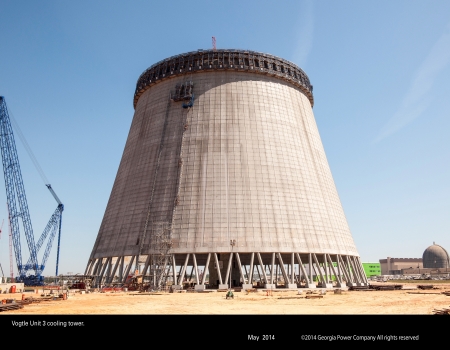
The U.S. Environmental Protection Agency (EPA) finalized the 316(b) standards under the Clean Water Act on Monday to protect aquatic life drawn each year into cooling water systems at large power plants.
More than 2 billion fish, crabs, and shrimp are killed annually by impingement or entrainment.
“EPA is making it clear that if you have cooling water
intakes you have to look at the impact on aquatic life in
local waterways and take steps to minimize that impact,”
said Nancy Stoner, acting Assistant Administrator for Water
at EPA.
According to the EPA, the final rule affects 544 existing
power generating facilities that withdraw more than 2
million gallons per day of water from U.S. waters and use at
least 25 percent of the water they withdraw for cooling
purposes. The rule requires that the location, design,
construction and capacity of cooling water intake structures
reflect the best available technology for minimizing
negative environmental impacts. To ensure flexibility, the
owner or operator of the facility will choose one of seven
options to meet the requirements with the best technology
available. Facilities that use more than 125 million gallons
per day are required to conduct studies to determine what
controls will be required.
“The electric power industry has worked for years to educate and inform policymakers of the potential impacts of this regulation on customers and the need for a flexible and cost-effective final rule. Based upon our initial review of the rule, we are pleased that EPA has avoided imposing a categorical one-size-fits-all approach to compliance; has embraced significant elements of flexibility; and has acknowledged the importance of weighing costs with environmental protection," said EEI President, Tom Kuhn. “Compared to the proposed rule, the final rule’s overall compliance costs will be lower; however, the final rule will present significant operational and compliance challenges. We remain concerned that the rule will not provide states with sufficient flexibility to regulate cooling water impacts cost-effectively on a case-by-case basis."
New units at an existing facility that are built to
increase the generating capacity are required to reduce the
intake flow to a level similar to a closed cycle,
recirculation system.
EPRI said in an article that their research showed
closed-loop cooling costs were estimated at $100 billion to
retrofit 450 power plants four years ago. Those costs are
now estimated to be at least $50 million per plant, and the
system could cost $2 billion or more per plant, particularly
for nuclear facilities.
Dominion Resources (NYSE: D) Chairman, President and CEO Thomas F. Farrell II released a statement that said the Virginia-based utility was satisfired with changes to the rule, including that state retain the authority to impose entrainment measures and identifying technologies that can reduce impingement impacts.
"The rule does not mandate the use of costly and
energy-intensive cooling towers at all facilities, yet it
will result in major capital investments in advanced
technologies that are suitable for each facility," Farrell
said. "These choices in compliance options based on enhanced
monitoring will ensure the selection of effective, yet
prudent technologies. This reasonable approach will minimize
costs to our customers and recognizes our responsibility to
protect the reliability of the electric grid."
Richard Myers, vice president for Policy Development, Planning and Supplier Programs with the Nuclear Energy Institute (NEI), said NEI will study the rule to see if it is acceptable to the nuclear industry.
"Different water bodies, fish populations, geography and plant engineering require site-specific analysis to determine the most effective measures to protect fish at a particular power plant. A one-size-fits-all requirement imposed nationwide, such as replacing once-through cooling systems with cooling towers, would result in adverse environmental consequences.
"Cooling towers consume twice as much water from the aquatic habitats we want to protect compared to once-through cooling systems," MYers said. "This fact is very important given projections that much of our country will face a water-constrained future. Technology-based solutions at a power plant's cooling water intake structure can be highly effective in protecting fish and can accommodate the ecological diversity of the various sites. As the EPA has pointed out previously, solutions like traveling screens, with a collection and return system, are comparable to cooling towers in protecting aquatic life in water bodies used for cooling power plants. These are the considerations that will guide our review of this final rule.”
The national requirements will be implemented through National Pollutant Discharge Elimination System (NPDES) permits.
EPA had delayed finalizing the rule several times since the 2004 Phase II Cooling Water Intake Structure rules were suspended in July 2007 in response to the U.S. Second Circuit Court of Appeals' decision in Riverkeeper v. EPA. The agency sent a letter to a federal judge saying it would meet the May 16 deadline to finalize the rule, saying that EPA had completed all reviews with industry and environmental groups.
Copyright © 2014: PennWell Corporation Subscribe to http://www.power-eng.com
http://www.power-eng.com/articles/2014/05/epa-finalizes-316-b-standards.html